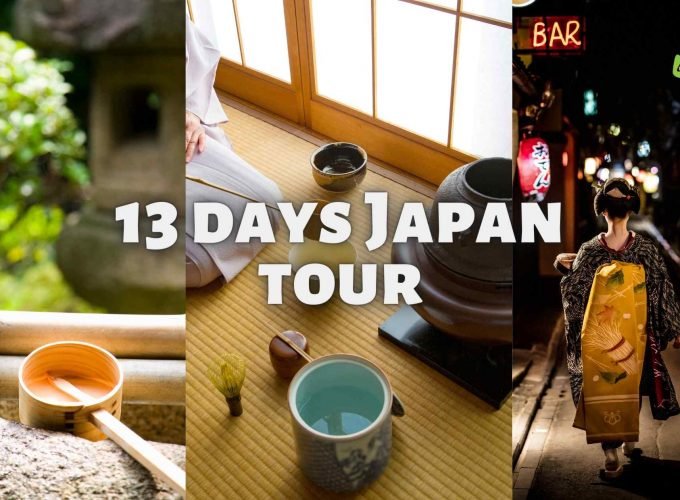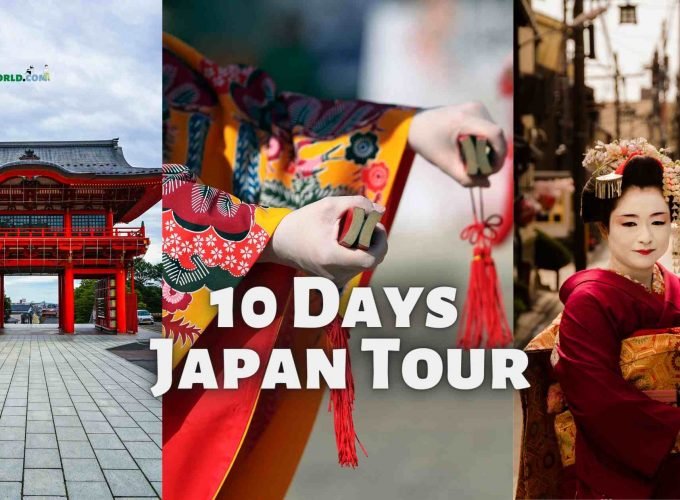About Children’s Peace Monument
The Children’s Peace Monument is a memorial that can also be referred to as the Peace Statue or the Monument in memory of the Atomic bomb Children. It is situated in Hiroshima, Japan and was built as a dedication to the children who passed away as a direct result of the atomic bombing that took place on August 6, 1945 in Hiroshima.
The Hiroshima Peace Memorial Park is the location of the monument, which was constructed in the year 1958. It is in the form of a dome and features a bronze statue of a young woman named Sadako Sasaki who is depicted with her arms extended while grasping a crane. The statue is based on a traditional Japanese fable in which it is said that if a person folds one thousand paper cranes, they will be able to have one wish granted to them. Sadako Sasaki, who was killed in the bombing, made an effort to fold one thousand paper cranes before she passed away. She did this in the hope that her desire would be granted and she would be able to recover from the consequences of radiation exposure.
The Children’s Peace Monument is a symbol of hope for peace as well as a reminder of the devastation that can be caused by conflict and the significance of working toward making the world a more peaceful place. Every year, thousands of people pay a visit to the memorial, and while there, they frequently leave behind gifts of flowers and paper cranes at the foot of the statue as a representation of their own personal aspiration for world peace.
A trip to the Children’s Peace Monument is sure to leave visitors feeling moved and will serve as a potent reminder of the significance of continuing to work toward world peace. Anyone interested in the history of the atomic bombing of Hiroshima and the ongoing fight for peace and disarmament should make it a point to visit this location at some point in their lives.
History of Children’s Peace Monument
Here is a timeline of the history of the Children’s Peace Monument:
- August 6, 1945: The atomic bombing of Hiroshima takes place, killing and injuring hundreds of thousands of people, including many children.
- 1955: Sadako Sasaki, a 12-year-old girl who was exposed to radiation from the bombing and developed leukemia, begins folding paper cranes in the hope of making a wish for her recovery.
- 1956: Sadako passes away at the age of 12. Her story becomes well known in Japan, and a group of students from her school start a campaign to build a monument in her memory.
- 1958: The Children’s Peace Monument is built in Hiroshima Peace Memorial Park, with funding from the people of Japan and donations from around the world.
- 1958: The bronze statue of Sadako Sasaki holding a crane in her outstretched arms is unveiled and becomes the centerpiece of the monument.
- 1963: The Children’s Peace Monument is designated as a National Memorial by the Japanese government.
- 1985: The statue is restored and the dome is repainted, with funding from the government and donations from around the world.
- 1995: On the 50th anniversary of the atomic bombing of Hiroshima, the Children’s Peace Monument is officially recognized as a World Peace Monument.
- Today: The Children’s Peace Monument continues to be a powerful symbol of peace and a reminder of the devastating effects of war and the importance of working towards a more peaceful world. It is visited by thousands of people every year.
How to reach Children’s Peace Monument
In the Hiroshima Peace Memorial Park in Hiroshima, Japan, you’ll find a monument dedicated to the children who died in the city’s atomic bombing. The following are some of the routes that lead to the monument:
By Train: Taking the JR Hiroshima Line to Hiroshima Station and then walking over to the Children’s Peace Monument is the most convenient way to get there by rail. From there, you have the option of taking a taxi to the Peace Memorial Park or walking there, which will take approximately 15 to 20 minutes.
By Bus: You can also reach the Peace Memorial Park via bus by departing from the Hiroshima Station bus terminal. You may get there by taking either the number 2 or the number 6 bus.
By Car: If you are traveling to the Children’s Peace Monument by automobile, there are numerous parking lots located in close proximity to the park, one of which is the Hiroshima Peace Memorial Park Parking Lot. Nevertheless, please be aware that parking may be restricted and may reach capacity rapidly during the busiest times of the year for tourists.
It doesn’t matter how you get there—the Children’s Peace Monument is a popular tourist destination, and it is well-signposted, so it’s not difficult to locate.
Do's and Dont's at Children’s Peace Monument
Here are some do’s and don’ts when visiting the Children’s Peace Monument in Hiroshima:
Do’s:
- Observe silence: The Children’s Peace Monument is a place of reflection and remembrance, so it is important to maintain a respectful and quiet atmosphere.
- Pay your respects: Visitors are encouraged to offer a silent prayer or reflection in front of the monument.
- Learn about the history: Take the time to learn about the history of the atomic bombing of Hiroshima and the story of Sadako Sasaki, whose story inspired the creation of the monument.
- Leave a donation: You can leave a small donation in one of the boxes near the monument, which is used to maintain the park and keep the monument in good condition.
- Take photos: Visitors are welcome to take photos of the Children’s Peace Monument, but please do so in a respectful manner and avoid disturbing other visitors.
Don’ts:
- Be loud or disrespectful: The Children’s Peace Monument is a place of peace and reflection, so it is important to maintain a quiet and respectful atmosphere.
- Touch the statue: Touching the statue of Sadako Sasaki is not allowed for preservation purposes.
- Leave litter: Please do not leave any litter or rubbish in the park or around the monument.
- Disturb the peace: Visitors should avoid running or playing in the park, as well as making loud noises or disturbing the peace in any other way.
- Engage in political demonstrations: The Children’s Peace Monument is not a place for political demonstrations or speeches, and visitors should refrain from engaging in any such activities while in the park.
Highlights of Children’s Peace Monument
The Children’s Peace Monument in Hiroshima is home to a number of notable features, including the following:
- Sadako Sasaki Statue: The monument’s focal point is a bronze statue of Sadako Sasaki, a little girl who contracted leukemia after being exposed to radiation from the atomic bombing of Hiroshima. Sadako Sasaki was a victim of the atomic bombing of Hiroshima. The statue represents Sadako with her arms extended, holding a crane as a symbol of her life and the message of peace she wanted to share with the world.
- Dome of Peace: The monument is crowned by a dome of peace, which is intended to represent the aspiration that one day there would be no more war in the world.
- Cranes Made of Paper: As a symbol of their hopes for world peace, visitors will frequently desecrate the base of the Children’s Peace Monument with paper cranes as they leave the monument. The narrative of Sadako and her attempt to fold one thousand paper cranes in the aim of granting a wish for her speedy recovery served as the impetus for starting the tradition of folding paper cranes.
- Hiroshima Peace Memorial Park: The Children’s Peace Monument may be found at the Hiroshima Peace Memorial Park, which is a vast park that is dedicated to fostering peace and honoring those who lost their lives as a result of the atomic bombing. In addition to these, the park is home to a number of additional memorials and monuments, such as the Atomic Bomb Dome and the Memorial Museum of Hiroshima.
- Message of Peace: A Strong Reminder of the Devastating Effects of War and the Necessity of Working Towards a More Peaceful World The Children’s Peace Monument is a powerful reminder of the devastating effects of war and the importance of working towards a more peaceful world. Visitors can ponder on the lessons that history has taught them and recommit themselves to working for peace while they are there.
People who come to see the Children’s Peace Monument are frequently brought to tears by the monument’s moving message as well as the tale of Sadako Sasaki. It is a site of contemplation, remembrance, and hope, and it is an absolute must for anyone who is interested in the history of Hiroshima and the search for peace to pay a visit there.








Comment (0)